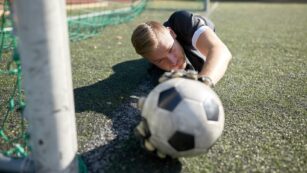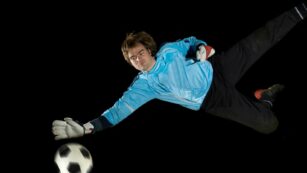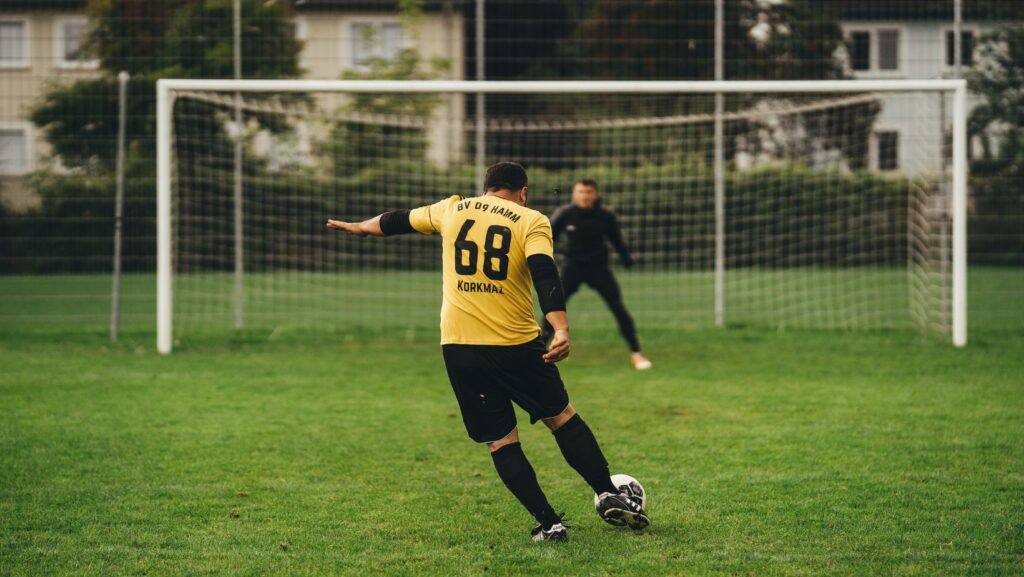Goalkeeping is often considered the last line of defense in soccer, but it’s much more than just stopping shots. A skilled goalkeeper not only protects the goal but also orchestrates the team’s defense, making critical decisions in split seconds. Understanding the basics of goalkeeping can elevate a player’s performance and contribute significantly to their team’s success.
Goalkeeping Basics
Goalkeeping encompasses several fundamental skills that every goalkeeper must master. These skills include positioning, diving techniques, communication, and distribution. Each aspect plays a critical role in a goalkeeper’s effectiveness on the field.
Equipment for Goalkeepers
Proper equipment enhances a goalkeeper’s performance and safety on the field. The right gear supports agility, protection, and effective play.
Gloves and Apparel
 Goalkeepers rely on gloves for grip and protection. They should fit snugly, allowing movement without sacrificing control. Options vary, including training gloves and match gloves, both typically featuring latex for better grip. Apparel, including jerseys, shorts, and socks, should offer durability and comfort. Moisture-wicking fabrics keep goalkeepers dry, while padded custom t-shirts and shorts provide added protection during collisions. It’s vital to choose colors that contrast with the team’s kit, aiding in visibility and communication.
Goalkeepers rely on gloves for grip and protection. They should fit snugly, allowing movement without sacrificing control. Options vary, including training gloves and match gloves, both typically featuring latex for better grip. Apparel, including jerseys, shorts, and socks, should offer durability and comfort. Moisture-wicking fabrics keep goalkeepers dry, while padded custom t-shirts and shorts provide added protection during collisions. It’s vital to choose colors that contrast with the team’s kit, aiding in visibility and communication.
Goalkeeping Gear
Essential goalkeeping gear includes protective items like shin guards, which shield against impacts during play. Headgear is also available to protect against head injuries during high-intensity situations. Training aids, such as reaction balls and goals of various sizes, help improve skills like shot-stopping and positioning. Additional accessories, like water bottles and cones, support training sessions. Ensuring all equipment meets safety standards enhances performance and reduces injury risks during practice and matches.
Training Drills for Goalkeepers
Effective training drills enhance a goalkeeper’s core skills and overall performance. Incorporating a variety of drills develops crucial aspects such as reflexes, positioning, and decision-making.
Reaction Drills & Positioning Drills
-
 Wall Pass: Partner tosses a ball against a wall for the goalkeeper to catch on the rebound, enhancing quick reflexes.
Wall Pass: Partner tosses a ball against a wall for the goalkeeper to catch on the rebound, enhancing quick reflexes. -
Reaction Ball: Utilize an irregularly shaped ball that bounces unpredictably, training the goalkeeper’s reaction times.
-
Marking Shots: Position the goalkeeper in different angles relative to the goal and have a shooter take shots from various distances, teaching proper positioning for optimal saves.
-
Cone Drills: Set up cones to simulate players blocking sight lines. The goalkeeper must navigate through them while maintaining focus on the attacker.
Diving Drills
-
Side Dives: Execute side dives to reach low shots. Use cushions or mats to increase comfort and safety while practicing.
-
Forward Dives: Practice diving for balls rolling toward the goal, focusing on technique and body control.
Distribution Drills
-
 Throwing Drill: Have the goalkeeper practice various throwing techniques, aiming for a target or partner, to improve accuracy in distribution.
Throwing Drill: Have the goalkeeper practice various throwing techniques, aiming for a target or partner, to improve accuracy in distribution. -
Goal Kick Simulation: Set up scenarios where the goalkeeper practices goal kicks to reach different points on the field, emphasizing distance and control.
-
High Ball Training: Toss or strike balls into the air, requiring the goalkeeper to practice catching and securing high shots.
-
Low Ball Techniques: Roll or strike balls along the ground, allowing the goalkeeper to practice the “W” grip and prevent rebounds.
Incorporating these drills into regular training sessions significantly enhances a goalkeeper’s skills. Adjust the intensity and complexity based on the goalkeeper’s experience level for optimal development. Regular practice ensures continuous improvement and strengthens the overall effectiveness of goalkeeping techniques.
Game Day Strategies
 Mastering the basics of goalkeeping is essential for any aspiring goalkeeper. By focusing on positioning communication and diving techniques a goalkeeper can elevate their game significantly. Implementing effective training drills consistently will enhance reflexes and decision-making abilities.
Mastering the basics of goalkeeping is essential for any aspiring goalkeeper. By focusing on positioning communication and diving techniques a goalkeeper can elevate their game significantly. Implementing effective training drills consistently will enhance reflexes and decision-making abilities.
On game day it’s crucial to stay mentally sharp and maintain confidence. A well-prepared goalkeeper not only protects the goal but also acts as a leader on the field. With the right mindset and skills goalkeepers can make a substantial impact on their team’s performance. Embracing these strategies will lead to greater success and a fulfilling experience in the beautiful game.

